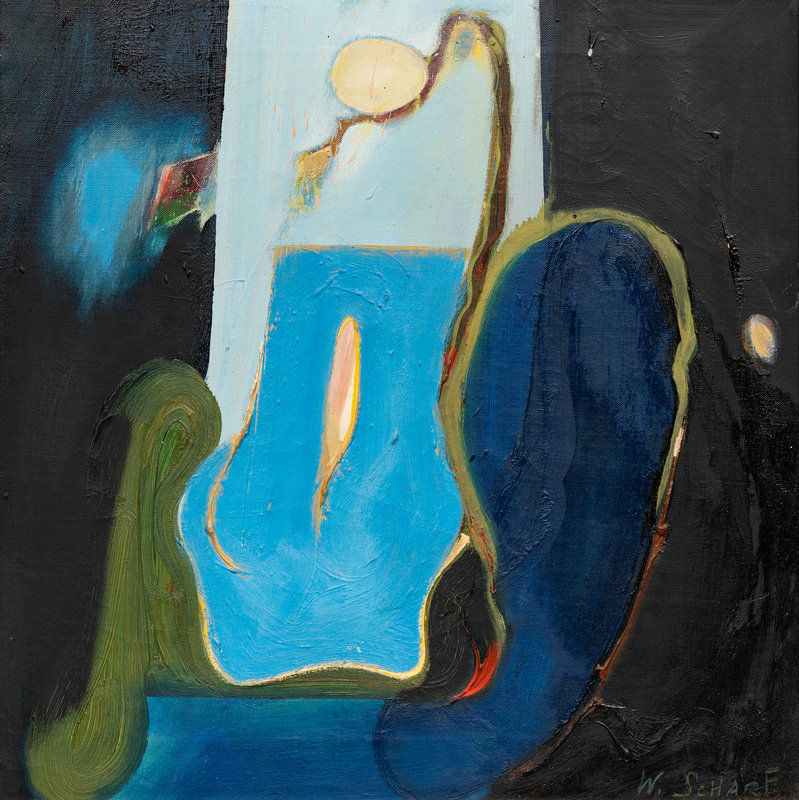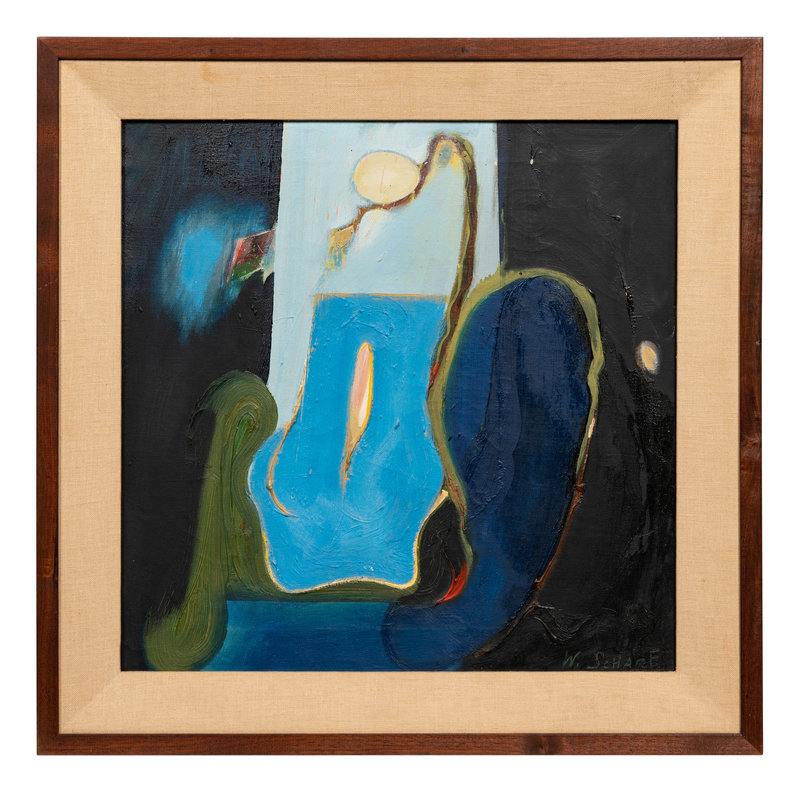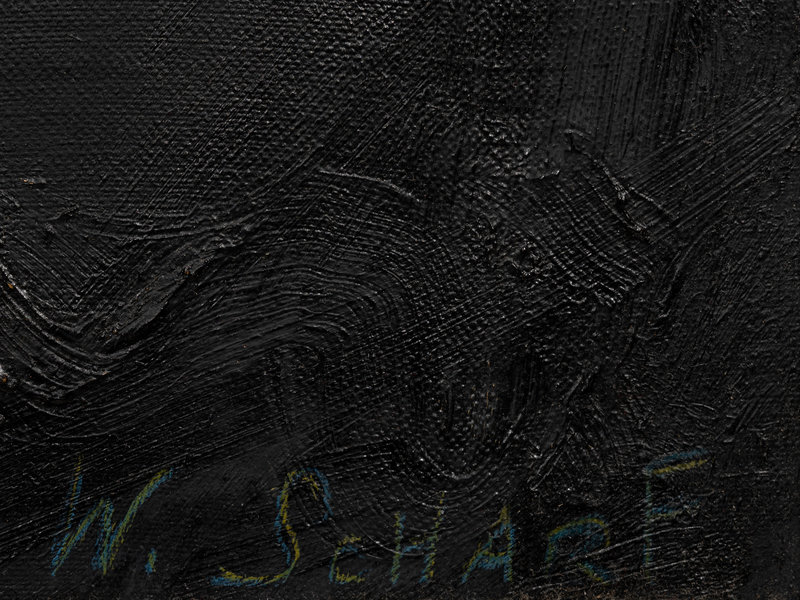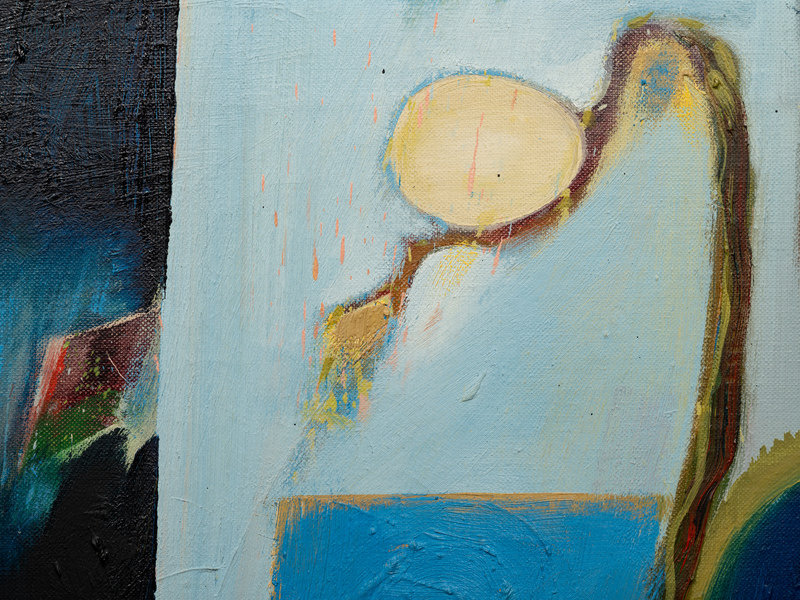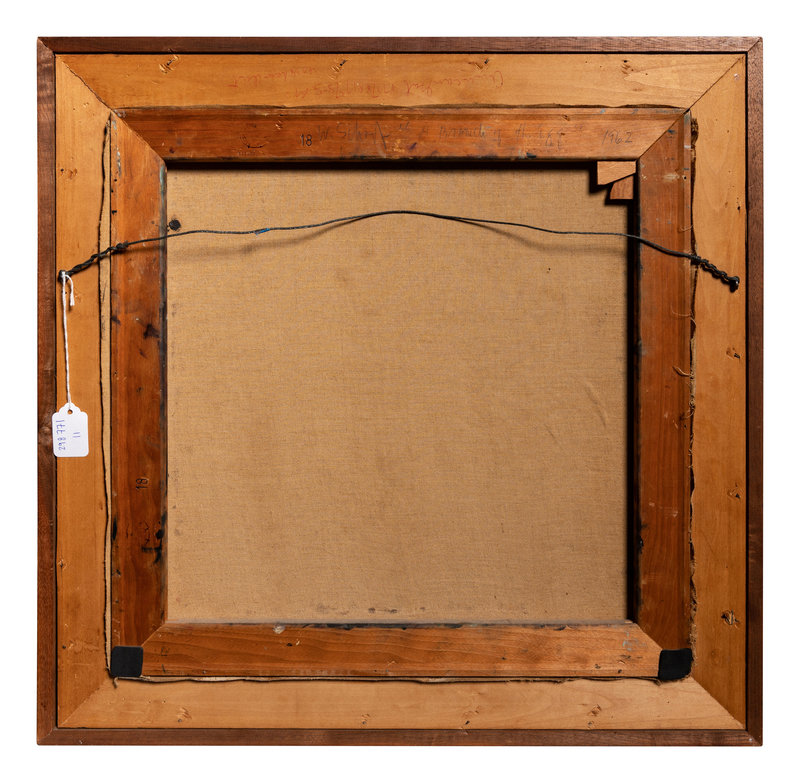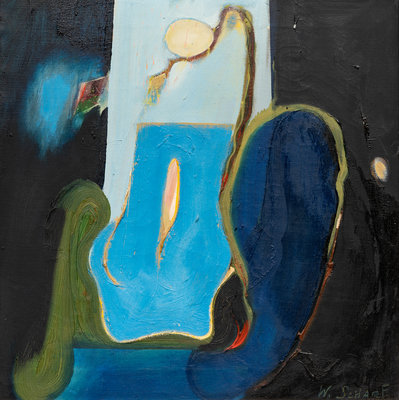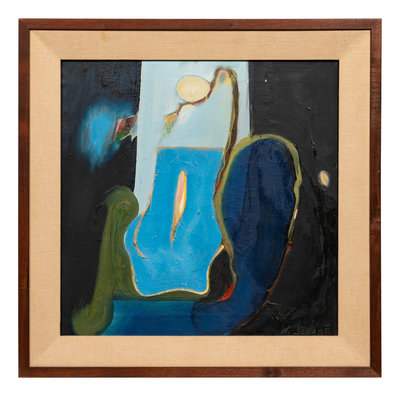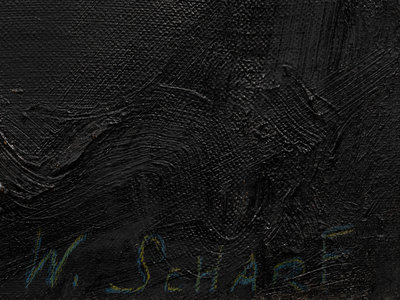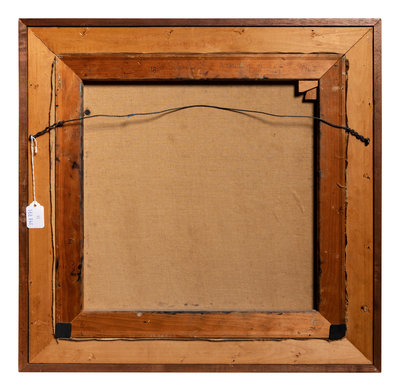Lot 28
William Scharf
(American, b. 1927)
A Branch of the Egg
, 1962
Sale 907 - Post War and Contemporary Art
Sep 28, 2021
10:00AM CT
Live / Chicago
Own a similar item?
Estimate
$1,000 -
2,000
Price Realized
$4,688
Sold prices are inclusive of Buyer’s Premium
Lot Description
William Scharf
(American, b. 1927)
A Branch of the Egg
, 1962oil on canvas
signed W. Scharf (lower right); signed, titled and dated (verso)
18 x 18 inches.
Property from a Private Collection, New York
Lot note:
The present group of paintings, including A Branch of the Egg, 1962, by William Scharf span a decades long career and represent an artist who spent years exploring and refining his intensely realized inner vision. Although he is often grouped with the Abstract Expressionists, his unique oeuvre defies simple categorization. Ranging in size from miniature to immense, Scharf’s artworks teem with vaguely familiar forms that evoke Surrealism while also expressing the dynamism of Abstract Expressionism. His paintings embody a very individual and immediately recognizable pictorial vocabulary.
Scharf was a master of the drawn line and this is seen in the swooping, curving brushstrokes in such works as A Branch of the Egg, 1962 (Lot 28), San Francisco, 1973 (Lot 45), and Whole Dawn, Half Egg, 1986 (lot 46). He was a constant doodler who would fill reams of napkins with drawings while at dinners. The strength of motion of his line serves as a defining force in the open shapes of his larger canvases that are filled and then colored in. The primacy of line is also a part of what makes his smaller works, some measuring no more than 9 x 4 inches, so compelling. In Vegetable Oracle and Coronation of the Moth, both c. 1999-2002 (Lot 48), confident lines form mysterious, organic shapes, which themselves are incised with assertive, incised strokes of both paint and the paintbrush’s handle.
The role of color is likewise paramount to Scharf’s paintings and adds a pronounced physicality. A close friendship with Color Field artist Mark Rothko cemented Scharf’s interest in color and its emotive possibilities. He was an early adapter of acrylics, which lends a pure incandescence to his compositions. His loose brushstrokes, combined with semi-transparent layering of glazes, create swirls of richly juxtaposed color that generate a kaleidoscopic, almost hallucinogenic, sensation in works such as Grape’s Elephant, A Tryst of Ulnas, and Lung Prisoner, c. 1999-2000 (Lot 48). Elemental energy is aljso conveyed through the push/pull of dark and light pigments, as evidenced in The Scratched and Unfixed Air, 2007-8 and They Thought Their Worlds of Each Other, 2008 (Lot 29). The value of contrasting dark and light was recognized by Scharf, who stated, “As a painter I use the nearness of darks to enthuse myself to finding the brightness and brilliance of wondrous whites (quoted in William Scharf: Within White, exh. cat., New York, 2010).
The gesture of his organic lines and the painterliness of his pigments unite and construct transcendental dreams of other worlds. “Scharf’s paintings seek origins in what look like seeds, pods, winding roots, the interior channels of human bodies and plants—and reciprocally ponder stars and moons, planets and galaxies. He subsumes the darkness of night in a pervasive richness of color—there is no better colorist—that radiates, glows, and burns with inner light” (Barbara Novak, “Bill Scharf and the Aboriginal Self: The Blue Paintings,” William Scharf: Blue Is, exh. cat., New York, 2009). Visual references to mythological or religious themes suggest creation, destruction, and propagation, and are gateways to existential mysteries. The artist’s evocative titles similarly invite a search for landmarks, and yet the works reject overt meaning or obvious imagery. Scharf’s complex compositions are a search for things seen and unseen, the real world and a world imagined. They are shaded in mystery and wonder and defy easy interpretation.
Born in Media, Pennsylvania, in 1927, Scharf was encouraged to study art by American artist and illustrator N.C. Wyeth. He went on to study at the Pennsylvania Academy of the Fine Arts, the Barnes Foundation, and the Académie de la Grand Chaumière. Scharf moved to New York in the 1950s and became a close friend of Mark Rothko and his wife, Mell, as well as other artists of the New York School. A beloved educator, he taught at institutions including the School of Visual Arts in New York, the San Francisco Art Institute, Stanford University, the Pratt Institute, and the Arts Students League in New York, until his retirement in 2015. Scharf’s paintings can be found in the permanent collections of the Solomon R. Guggenheim Museum; the Brooklyn Museum; the Philadelphia Museum of Art; the Institute of Contemporary Art, Boston; the Irish Museum of Modern Art in Dublin; and the National Museum of American Art in Washington, DC.
Condition Report
Contact Information
Auction Specialists
